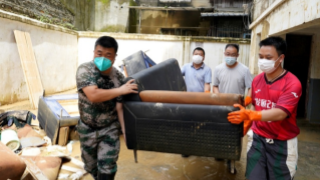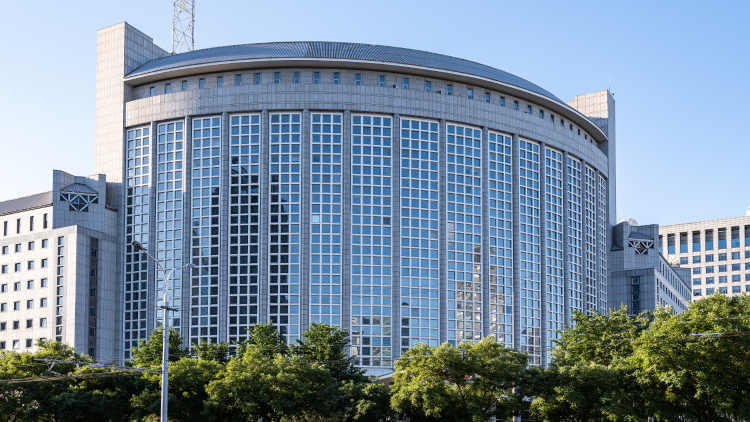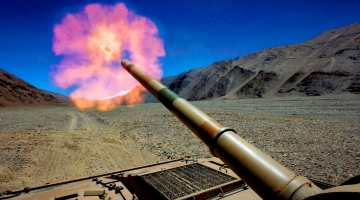By Hua Dan, Liu Zheng and Xiao Liming
Japan plans to issue construction bonds worth 511.7 billion yen ($3.29 billion) to finance its defense buildup this year, an increase of 77.4 billion yen from the previous year, according to Japanese media reports on May 7. It is reported that in 2023, the Kishida government abandoned Japan's previous policy of not relying on borrowing to cover defense expenses, in an attempt to strengthen the so-called defense capability.
In recent years, Japan has accelerated the transformation of its defense system, increased its defense spending year by year and continuously promoted the militarization of civilian resources. From the use of public debt for military purposes, to the large-scale upgrading and expansion of civil airports and seaports that began last year, to the recent admission of US warships to its civil ports, all these moves demonstrate that Japan is constantly breaking the framework of the pacifist constitution, deliberately blurring the boundaries between peacetime and wartime, and accelerating the expansion of its military power. These acts show a dangerous and belligerent tendency.
After the end of World War II, to prevent the further expansion of Japan's militarist power, the US not only took measures to destroy the defense industrial base that supported Japan's capacity to launch wars, but also strictly limited its military spending and the size of its Self-Defense Forces. Bound by the pacifist constitution, Japan is highly reliant on protection from the US in terms of military security, and devotes its main energy to the development of the civil economy.
However, this does not mean that the Japanese right-wing forces have given up their ambition to rebuild Japan into a military power. In recent years, as the US speeds up its pursuit of "great power competition" and the "Indo-Pacific strategy", Japan has seized the opportunity to constantly strengthen its military ties with the US, in an attempt to loosen restrictions on its military development. During the Abe administration, Japan removed the ban on the right of collective self-defense under the slogan of "Proactive Pacifism", which severely weakened the restrictions on the scope of activities of the Japan Self-Defense Forces imposed by the pacifist constitution.
The Kishida government has mostly inherited Abe's legacy in Japanese security policy. It not only revised the three security and defense-related documents to add provisions allowing Japan to build counterattack capabilities, but also unabashedly shifted Japan's defense system to a defense architecture of the whole country. At the end of 2022, Japan adopted a new version of National Defense Strategy, which defines the defense architecture of the whole country as building "an overall national defense architecture by integrating Japan's national power--diplomatic, intelligence, economic, and technological--as well as by systematically combining all policy means." In July 2023, Japan released its new Defense of Japan white paper, which further elaborates on the defense architecture of the whole country, emphasizing that in the future, it would adopt an integrated system to improve the effectiveness of joint operations and achieve seamless operation across all phases from peacetime to armed contingencies.
In fact, the above-mentioned concept complies with the so-called "whole-of-government and whole-of-society" approaches of the US, seeking to concentrate resources from all sectors, and coordinate the efforts of governments at all levels, non-governmental organizations, and even individuals, blur the boundaries between peacetime and wartime, and ultimately enhance Japan's overall military deterrence. These moves with hidden evil intentions fully manifest the dangerous changes in Japan's defense system.
In recent years, while significantly adjusting its security strategy, Japan has also advanced and expanded military-civilian resource sharing in preparation for its involvement in future wars. To this end, Japan spares no effort to hype up the "military threats" it will probably face in the future and deliberately describes the increasingly complicated geopolitical environment as a "security threat" facing the Japanese people. To "fully defend the lives and livelihoods of Japanese nationals" , Japan's Ministry of Defense has demanded that the defense budget be doubled from 1% of GDP in 2023 to 2% by 2027. To raise funds to cover the massive defense expenses, the Japanese government is bound to issue bonds on a large scale, which will further aggravate its fiscal difficulties.
On May 3, more than 30,000 Japanese citizens flooded the streets of Tokyo in a massive rally to defend their country's pacifist constitution and express their strong anxiety about the rising militarist tendency in Japan. After Japan introduced the defense architecture of the whole country, people could not help but recall the dark history of the Japanese military during World War II when it carried out the "total war". At that time, the Japanese rulers completely placed the country under the control of the militarists, with its political, economic, ideological, and educational sectors all involved in its war of aggression. All Japanese people became a component of the "war machine"; they either participated in the war in person or provided support in the rear areas, forming the social basis for Japan to launch the war of aggression.
At present, more and more Japanese people are expressing strong dissatisfaction with the expansion of military strength by those in power under the guise of civilian use, and they worry that they will be forcibly tied to the chariot of militarism and become "cannon fodder" in war again. The international community also worries that Japan is repeating the old path of militarism by devoting more civilian resources to supporting arms expansion.
Currently, the Japanese government is comprehensively promoting the transition of its defense system, which has further deteriorated the regional security situation. This is widely considered an extremely dangerous move. The Japanese government should draw lessons from history, stick to the path of peaceful development, and avoid going further down the dangerous road.
(The authors are from the PLA Army Engineering University.)













